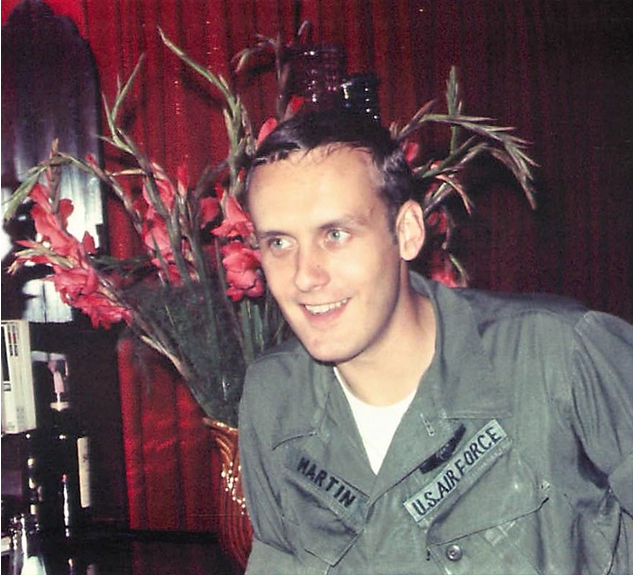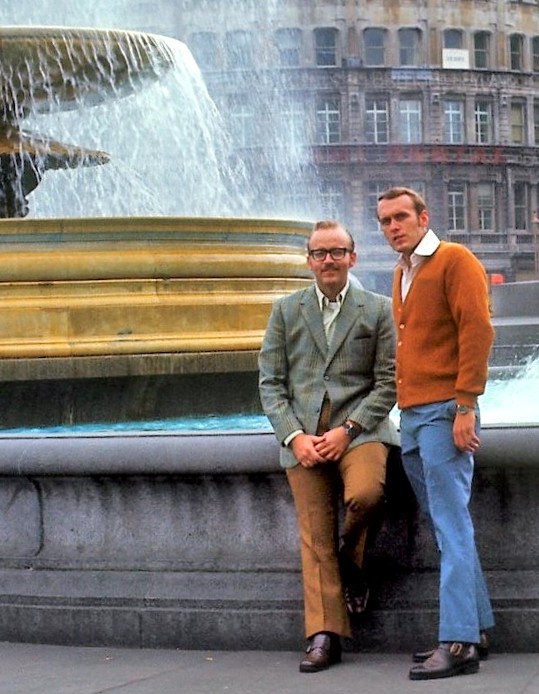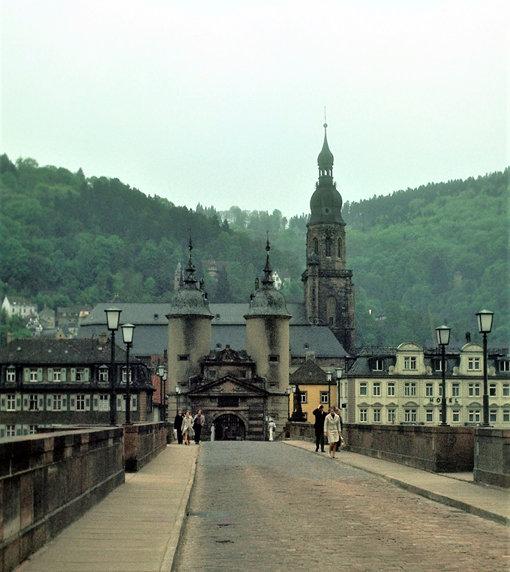. . . or how to make the most of your Vietnam tour
By Joe Martin
I reported to the 6994th Security Squadron at Saigon’s Tan Son Nhut Airfield on or about 15 February 1970, after going through the PACAF Jungle Survival School at Clark AFB, Philippines. Just an hour or so before, our chartered jetliner (Braniff, I believe it was) had made landfall somewhere up the coast. As I looked out the window at all that jungle below, the Vietnam war suddenly became a tangible thing. People down there were trying to kill each other—and maybe me.
By the time I arrived in Vietnam the U.S. was on the way out, although that was not readily apparent. True, the ground war in South Vietnam had slackened considerably over the past year or so, but the conflict would soon expand into Cambodia, while the “secret war” in Laos intensified. For the air force, in terms of takeoffs and landings Tan Son Nhut remained among the world’s busiest airports. It looked like there was plenty of war still ahead, and that presented a bit of a problem. “Vietnamization” was still a largely untested concept, but the idea of sending yet more American troops to Vietnam was now a political non-starter. Somewhere, some unknown bureaucrat came up with a partial solution: Personnel already in country who would sign up for a six-month extension in place could spend thirty days of that time anywhere in the so-called Free World—and Uncle Sam would spring for the air fare. At the time I had no idea such a deal even existed. It would eventually turn out to be an offer I couldn’t refuse, but first I had a year in Vietnam to look forward to.
Asian Studies 101
I didn’t fly my first mission (down in the Delta somewhere) until 25 February, but by then I’d already had a very fine new-guy orientation. A day or two after I showed up, Wil Lowrance, an analyst I’d known at my previous station, Elmendorf AFB, just outside Anchorage, looked me up. With another guy whose name I never got, we proceeded down to Saigon. Within about fifteen minutes I was introduced to how business was done in Vietnam. The official exchange rate for Vietnamese currency was ridiculously low but alternatives were plentiful and the guy with Wil and me promptly found one. After a brief negotiation, he handed the money changer a fair amount of MPC. The Vietnamese then peeled off several high-denomination bills of local currency, wrapped the roll with a rubber band, and handed it over. A minute later our friend unwrapped the wad only to find it consisted of low value bills worth maybe a tenth of what he’d bargained for. I’d watched the whole thing but spotted nothing. It was a slight-of-hand performance a professional magician would’ve been proud of. Lesson number one of many.
The “Paris of the Orient” had long since lost much of its colonial-era charm. Saigon was instead a smoggy, stinky, overcrowded conglomeration of old residential dwellings and refugee shanty towns, with every kind of shop imaginable and a mix of high-end hotels and commercial buildings thrown in. Downtown traffic made me think I'd been plopped in the midst of some kind of giant beehive; thousands of pedestrians, more thousands of motor scooters, cyclos, motorized and pedal-powered, the little cream and blue taxis, military deuce-and-a-half trucks—even the occasional Mercedes or Cadillac—all trying to occupy the same space at the same time. Somehow it all worked out; crashes or injuries seemed rare. Considering the alternatives, it looked like a no-brainer to me. If you had to be in Vietnam, Saigon was the place to be.
Cultural Immersion
In the 6994th, and probably every other outfit in similar circumstances, there were basically two kinds of troops: Those who refused to leave the reservation and those who refused to stay on it. Without going into detail concerning the various diversions available off base, it struck me that not knowing at least the gist of the conversations going on around him placed the typical G.I. at a serious disadvantage. What I needed was a wingman who understood the lingo. Unlike some other units, the 6994th seemed to have its full quota of Vietnamese linguists—“two-oh-threes”, the Air Force Specialty Code (AFSC) for that line of work. These poor saps were forced to endure a year or more at the Defense Language Institute at Monterrey, California. The downside, obviously, was the rather limited selection of duty stations available after graduation!
Exactly when we met I have no idea, but Rich “Spirus T” Renkas had already been in country for several months. As I recall, he was not much of a town runner, a least then. "Well Spirus", says I, “you have all this training that’s basically going to waste riding Z1 in an EC-47.” (Enemy voice targets were rare in our mission areas.) “Let’s put those tax dollars to better use.” The upshot was a two-man civic action program designed to better the lives of the young women eking out a living pushing “Saigon tea” at the local watering holes. We eventually made our headquarters at the Bonanza, a little bar only a couple of miles up the main drag towards Saigon.
| |
 |
 |
| Typical Saigon street, mid-1970 | Me at the Bonanza | War was hell ..."Goose" Guise & friend |
The principal bartendress (and maybe part owner; I never asked) was a woman named Thuy (pronounced “Twee”.) Of indeterminate age; probably mid-thirties, although she could’ve been older, she had left Hanoi when the communists came to power. I took it that her family had been quite well off. She was extremely intelligent and spoke excellent English. One morning I basically opened the place, and was the only customer. “Would you like to play Scrabble,” Thuy asked, “It’s a good way to build your vocabulary.” I nearly fell off the barstool. A while later I tried to put down “sox”, as in Red Sox, but she called me on it. I gave up and went back to my beer. It was by no means our only hangout, but Spirus and I logged many hours in the Bonanza. The atmosphere was like Saigon's version of Cheers; everybody knew your name, the company was always good, and it taught me a lot about Vietnam and Vietnamese culture.
Future plans . . . ?
Fast forward to New Year’s Day, 1971. I was just back from R&R in Sydney. (I left TSN on Christmas Day.) My tour—and enlistment—was nearly up. I could’ve almost certainly gotten an early out to return to school, although I had no great desire to do so. I'd been promoted to Staff Sergeant (E-5) a few months before, which conferred genuine NCO status and thus exemption from any sort of menial tasks, although outside the restricted operations area the locals were hired for most of that stuff anyway. The 6994th had put the “air” in Air Force, and I enjoyed the old Gooney Bird and the ARDF work—except for those pre-dawn sorties and the dreaded “smoker” which launched around dusk and didn’t RTB until near midnight. I’d racked up something like 130 missions by then, including twenty-some out of NKP and Phu Cat while TDY. Flying in any war zone has its dangers, naturally, but in our case it was minimal. After May, 1970, the majority of TSN missions were fragged over Cambodia, mostly targeting the ever elusive COSVN. At the time the bad guys hadn’t been able to move much AAA that far south and man-portable SAMs had not yet made their game-changing appearance. To my knowledge, no Saigon-based EC-47 received so much as a scratch due to enemy action during my time there. The city took a rocket now and then, but if Tan Son Nhut was ever hit, I was not aware of it. I was flying three or four times a week and doing as I damn pleased otherwise. In short, life was pretty leisurely. The work wasn't hard, I was seeing a lot of different places, and as crazy as it may sound, I had no better plan.
Around the World
Not long thereafter, Spirus and I, along with probably six or eight other guys, were lounging outside the barracks next to Cougars Cavern. After a few beverages, the topic of “where do we go from here?” came up. I was on the cusp of shortness, as were some others, but Spirus evidently still had a ways to go before resuming civilian status. Somewhere in the conversation the six-month extension deal came up. I’d already contemplated that, thinking it might be the best chance I’d ever have to go to, say, South Africa. But after recalibrating the beer goggles and momentarily visualizing a world map, one of us mumbled to the other "Why don't we go to Copenhagen?” So we did.
First order of business was a passport. I’d never had one, but the Saigon embassy took care of that. Once we’d filled out the extension paperwork, we received some sort of voucher for airline tickets. Pan American, which at that time was arguably the world’s premier airline, had a ticket office right there on TSN. I’ve long since forgotten the administrative details, but we ended up booked on Pan Am flight 2, their eastbound around-the-world service, starting from New York and ending up in San Francisco with various stops in between. (Flight 1 went the opposite direction from SFO. Thanks to industry and other politics, Pan Am had no domestic routes across the U.S., thus the NYC-SFO gap.)
Once we made our way to JFK we climbed aboard a Boeing 747 and jetted to London where, according to my passport stamp, we arrived on 17 April 1971. (I wouldn’t fly on another 747 for 33 years, oddly enough on a Vietnam revisit in 2004.) We spent a week playing tourist in London, then it was off to Copenhagen for more touristy stuff. One of the highlights was ramming bumper cars at the famed Tivoli Gardens. The weather was decent enough but we would’ve been wiser to have held off another couple of weeks. From Copenhagen we flew down to Frankfort, where we caught a train and headed south.
 |
 |
|
I knew a couple of guys at the 6910th at Darmstadt, and best I remember we spent a night or two there. We had a few more German beers in Heidelberg, then rolled on down to Zurich. From there we somehow made our way over to Mt. Pilatus. It was strange being in snow after sweltering in SEA for more than a year. By now the thirty-day clock was winding down pretty rapuidly, so we hopped the train back to Frankfort to intercept Pan Am Flight 2. Again details are hazy, but as I recall the route took us to Istanbul, Karachi, Calcutta, Rangoon, and finally Bangkok. If we disembarked at all along the way, it was just long enough to top the tanks and take off again. Before heading back to Saigon we planned to spend what little time and money we had left in Bangkok.
That night, or maybe the next, Spirus and I were walking out the entrance of the hotel when I heard someone say “Joe ?” I turned to see E.G. “Gary” Crawford, Jr., DDS, a guy from my hometown who was doing a stint as a Navy dentist. Gary was a couple of years older, but I knew him fairly well. The three of us chatted for a bit then went on to wherever we were headed. Talk about coincidence; what are the chances of two guys from Franklin, N.C., running into each other in Bangkok? I hadn’t seen Gary since high school—and I haven’t seen him since.
